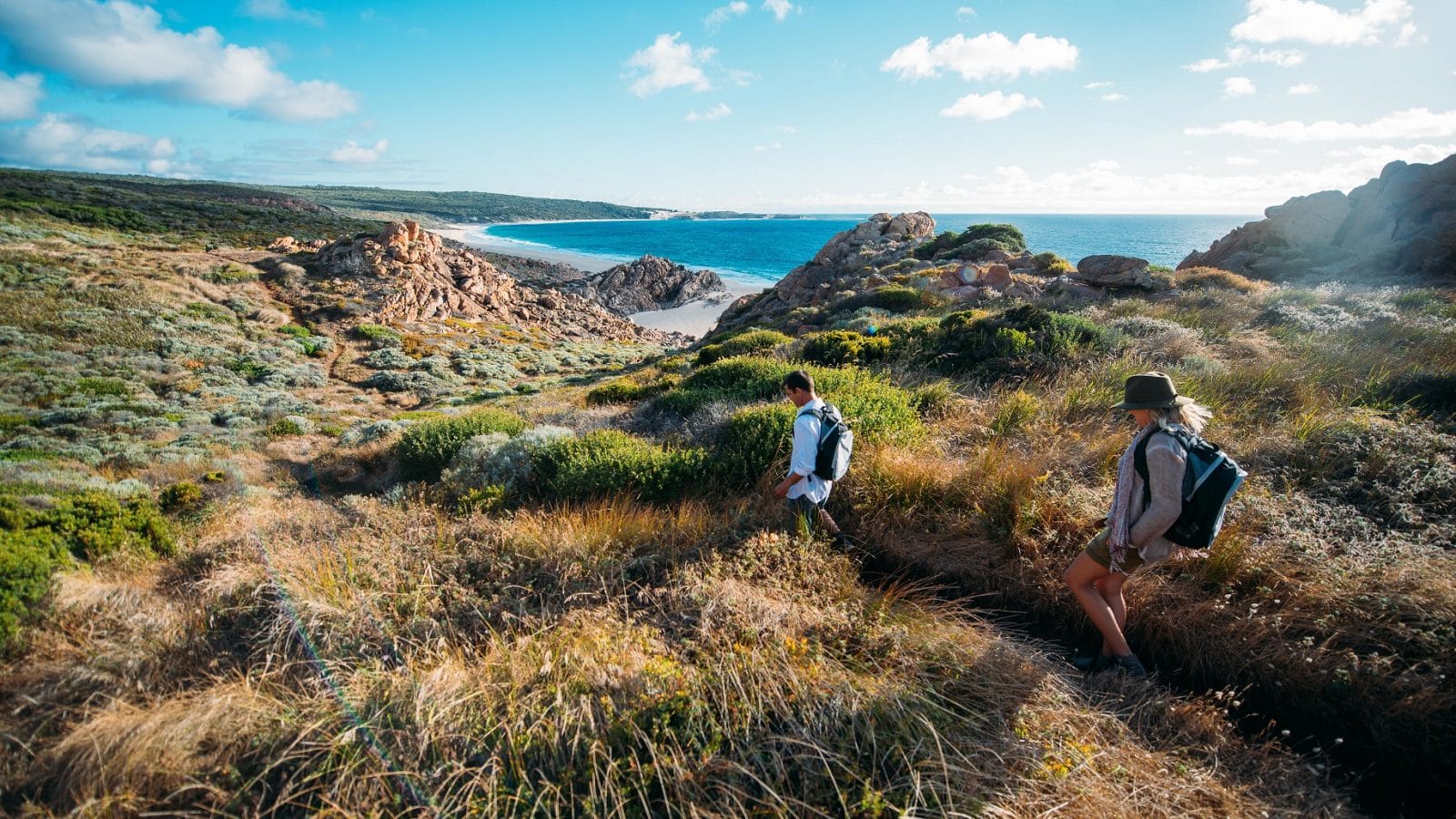Wednesday, November 13, 2019
Stay safe while bushwalking
in Australia’s South-West
 Hiking – Photo Elements Margaret River
Hiking – Photo Elements Margaret River
The crunch of leaves beneath your feet, the breeze ruffling your hair, discover stunning water courses and the chance to get close to animals and plants thriving in the region; if you really want to experience a holiday destination – really experience it – step out and go for a bushwalk.

But it isn’t without dangers. You’re in the environment with wild animals, changing weather, hazardous geological formations and more, so you must be prepared before you set off.
10 bushwalking and hiking safety tips
1. Pack water
On a semi-urban trail, a big bottle of water should suffice, but if you’re going proper bushwalking or walking a long trail, pack 2L for a full day or 3L if it’s hot.
2. Prepare for a possible emergency
Download the Emergency + app before you go anywhere. This government service has an inbuilt GPS, so emergency services can find you. If you’re in trouble and you do have mobile service, call 000 or 112. Those with a hearing impairment can text 106.
3. Wear the right gear
You’ll thank your stars after you’ve been walking hours with a comfortable backpack. And try everything on first: your shoes so you know whether they will give you blisters, your rain jacket to see if it actually keeps water sufficiently off you, and whether your shirt fabric is breathable.
Your choice of shoes is crucial. You’ll need ones with good grip and ankle support. Remember to pack a pair (or even two) of good quality socks.

4. What to carry
This depends on where are how long you’re going for. On longer excursions or more advanced grades you’ll need to pack a lot more, including a pen and paper, guide, map, compass, whistle, torch and a small medical kit. For more information on what to carry, visit Trails WA or Bushwalking Leadership SA.
5. What to do if you encounter a snake
Snakes are a natural part of Australia and a given when bushwalking or hiking. Avoid poking around common snake hiding spots such as logs and tall grasses. If you see one on the path ahead, take another direction or wait until the snake has moved on. Learn more about snake encounters with Australian Hiker.
In the event of snake bites: while most snakes are not venomous, you’re unlikely to know exactly know what kind of snake it was. Call or send for help, remain still so any potential poison doesn’t have a chance to circulate, and bandage or apply firm pressure to the area. Don’t suck out the poison or wash the wound. Learn more about snake bites and snakebite prevention safety.
6. Tell someone where you’re going
No matter where you’re going, inform someone of your intended destination and when you think you’ll be back. Mobile service may be patchy in areas away from towns, so don’t rely on being able to call for help or access online maps on your phone.
7. Check the weather
While walking in the cooler weather with a light misting of rain is beautiful, will that gentle rain turn into a downpour and create a slippery mess? Warm weather comes with risks too. In the height of summer in Western Australia, the temperature can exceed 40°C. While this is the exception, be cautious about when and where you hike December through to March. In these months, early morning is usually best.
Visit the Bureau of Meteorology for up-to-date information.

8. What to do in the event of heat stress
This can easily happen in Australia. If you think you, or another hiker, is suffering from heat stress, sit or lie down in a cool shaded area, loosen or remove clothing, and take small sips of water.
9. Plan your route
Being spontaneous is fun but when you’re doing serious bushwalks or hiking, you do need to plan ahead. What may seem like an easy 4km journey could actually take quite a long time if the terrain is rough or steep. And you do not want to be hiking in the dark.
10. If you get lost
If you’re in a group, stay together. If you’re alone, stop where you are and take a few deep breaths to calm yourself. Check your map to see where you might have taken a wrong turn, or even retrace your steps. However, do this for only a few minutes – you don’t want to get more lost! If you can get to higher ground easily, see if you can see any distinguishing features from above.
For more information, visit Trail Hiking Australia.
See Trails WA to find out where you can go, the grade, the distance, the time it will take to complete, and more. And above all – enjoy yourself! There’s nothing like bushwalking to feel connected to the environment and lighten your mental load.
Browse our portfolio to discover the perfect holiday home for your bushwalking adventure in the South West and Great Southern.
You might also like:
Sign up for our newsletter to stay updated on all things Private Properties.





